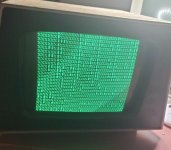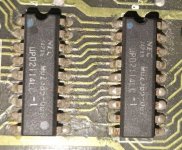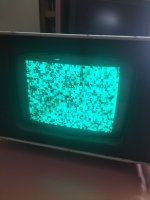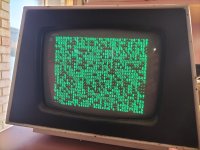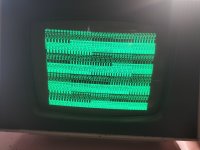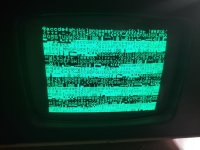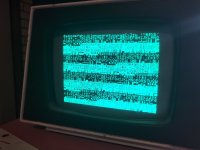eight088
Experienced Member
Hi everyone
So my next attempt at a repair has begun! I have a 3032 pet that I'm trying to get working after having just fixed the vdu. Initial symptoms are a garbage screen when first flicked on, then the screen changes to predominatly % and $ symbols.
From a previous post daver2 asked to check the following -
I can report back that
daver2 also asked -
Unfortunately I do not. Would a tl866 do the job? I've been wanting to get a programmer for a while, and I might grab one of these if it will suit the type of eproms I will need to use.
Cheers
So my next attempt at a repair has begun! I have a 3032 pet that I'm trying to get working after having just fixed the vdu. Initial symptoms are a garbage screen when first flicked on, then the screen changes to predominatly % and $ symbols.
From a previous post daver2 asked to check the following -
daver2 said:The next place to check with your oscilloscope is on the 6502 CPU.
Pin 2 (RDY) should be HIGH.
Pin 4 (/IRQ) should either be HIG or pulsing - put not permanently LOW.
Pin 6 (/NMI) should be HIGH.
Pin 7 (SYNC) should be pulsing (if the CPU is executing instructions).
Pin 38 (SO) should be HIGH.
Pin 39 (/RESET) should be LOW when you first turn the PET on, and then go HIGH after about half to one second.
Let's see where that takes us.
I can report back that
- Pin 2 is high
- Pin 4 is low (starts high when the system is turned on, then goes permanently low)
- Pin 6 is high
- Pin 7 is pulsing
- Pin 38 is high
- Pin 40 (I think you meant 40 instead of 39) is low then high.
daver2 also asked -
daver2 said:Do you have the capability for burning EPROMs?
Unfortunately I do not. Would a tl866 do the job? I've been wanting to get a programmer for a while, and I might grab one of these if it will suit the type of eproms I will need to use.
Cheers

